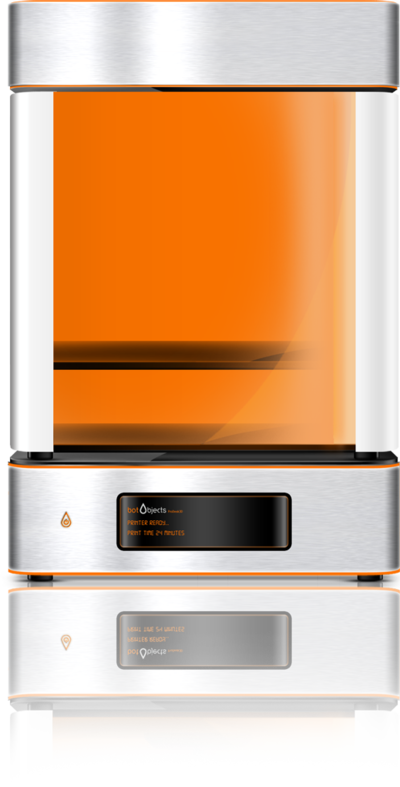 New York City startup BotObjects announced what could be the first full-color plastic 3D printer, the ProDesk3D. While their stealthy launch and impressive claims have generated some buzz, they have also generated major controversy.
New York City startup BotObjects announced what could be the first full-color plastic 3D printer, the ProDesk3D. While their stealthy launch and impressive claims have generated some buzz, they have also generated major controversy. First, what’s the ProDesk3D? It’s a desktop 3D printer, suitable for consumer or office use. It prints extruded PLA or ABS plastic in a ridiculously accurate resolution of 0.025mm, far smaller than almost everything else we’ve seen. Two extruders are present; one for material and the other for PVA water-dissolvable support structures. Material is supplied via an unseen “5 color PLA cartridge system”. The unit is provided fully assembled, has an attractive yet curious case, is self-calibrating and includes a mysterious “tri-fan” system to increase airflow.
And that’s all we know. They have not specified any further statistics, pricing, shown sample models or exhibited videos of the seemingly miraculous color process.
Is this for real?
Skeptics exist among the 3D printing community. Joris Peels posted a long and detailed analysis of observations he found suspicious. Rachel Park had similar concerns and spoke directly with the folks at BotObjects, who reassured her that it was indeed “the real deal and that patience is the name of the game”.
While we are truly impressed with the industrial design of the ProDesk3D, we have suspicions about the full color capability. Evidently “five colors” are somehow mixed enabling the printing of any shade of color. This is precisely how ink jet printers print photographs, and it’s long been a dream of 3D printer enthusiasts to build a full color mixing plastic 3D printer.
But it’s really hard to do. Current technology involves mechanically pushing plastic filaments into a hot extruder and waiting a precise time for the plastic to melt. Adding a mixing chamber for two pushed filaments would be rather complex, let alone a chamber accepting five different filaments (likely CMYK and White).
Quick color switches would require the mixing chamber to be completely purged of the previous color – in other words, the mix must include ONLY and PRECISELY the amount of plastic for a particular color extrusion. This would necessarily have to be done almost continuously if you were printing a photographic texture on an object. The mechanics, precision and software control to perform this would be daunting. If this approach worked, the resolution simply could not be as small as is claimed, unless the ProDesk3D has truly microscopic filaments and mixing chambers.
We suspect they’re extruding plastic in a completely different manner. Perhaps they’ve invented a way to fully liquify the plastic and jet it out in a way similar to ink jet printers, which might be able to handle more precise and micro-scale mixing. If so, this could account for the 0.025mm resolution. We don’t see any current patents assigned to BotObjects, but maybe they’ve applied to patent this type of process.
Regardless of our idle speculation, we simply won’t know until BotObjects demonstrates their machine and exhibits print samples. As Carl Sagan said years ago, “Extraordinary Claims Require Extraordinary Evidence.”
We hope to see the evidence in a few weeks when BotObjects tells more of the story.
Via BotObjects


